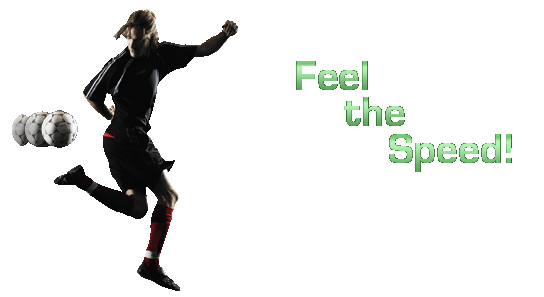How do you Coach Football Speed?
In most clubs, whether youth, amateur or professional Speed is treated as part of fitness and specifically as part of speed strength and speed endurance.
But this is counter productive to the development of speed.
Price: £24.46
Buy Now
The Optimal Training period
- Who, When, Why & How
Age is a particularly important factor in the development of speed. As we grow up we go through a number of biological development stages, and several “sensitive” stages like the best periods to train.
Although motor development should begin at a very early age and does occur naturally, there are three Key stages where Speed and movement learning should begin:
The period between the ages of 10 -13 years old is ideal for movement training and establishment of motor engrams. This is due to the high excitability and plasticity of the Central nervous system which allows us to teach the correct movement patterns.
Many scientists believe that the distribution of Fast Twitch and slow twitch fibres is not complete until the beginning of puberty. So it makes sense to continue to work speed during the pubescent years when there are naturally increasing levels of testosterone or oestrogen – boys 13-17 years old and girls for 11 to 15 years.
Does this mean that Speed cannot be trained at any other group? No of course not, speed can be improved at any age, with the right training systems for the sport. But this is the age bracket where we can make the best possible difference.
The Neural Stimulus - Training the Neuromuscular system
The foundation process should begin at an early age, the earlier the better. Formal movement training and motor skill development should begin at the age of 8 and continue throughout the lifetime of the athlete. Soccer Speed is a skill and coaches should coach it as a skill.
What we want to do in the initial phase is create permanent Motor Engrams or Movement Patterns. Movement patterns created at an early stage of a Motor programme are perfected and created as permanent Motor Engrams. In the same way that a Positive Movement Pattern can be permanently created, a Negative or inefficient Movement Pattern can be created, which will affect the Speed and Biomechanics of a footballer. It is equally important for footballers to have the ability to move as efficiently and precisely as possible as it is to move fast as possible.
To add a new movement to your repertoire, it needs to be stored in your muscle memory. When your body performs a motion, a series of nerve impulses fire off in a specific sequence. You can think of the pattern of nerve impulses as an electronic map that is stored in your neural system. The problem is you can't simply perform the movement once and save it. You have to repeat the sequence over and over until that particular motor engram is permanently ingrained in your muscle memory.
In football as with many other sports you cannot coach speed in isolation of technique. When an engram is formed through learning a skill or movement pattern it very quickly becomes a stable engram. The stable engram is very difficult to modify. A good example of this is footballers who when making a turn, have a preference on one side rather that the other.
In research carried out with 300 players aged between 9 and 21 it was found that 65% of over 12’s were slower turning on their left side rather that the right and vice versa by between 0.2 to 0.65 of a second. For a defender this can mean a difference of 1-2 metres in distance, when trying to catch or keep up with an attacker, by which time the attacker has scored!
This is critical when setting-up a speed training programme. The structure of the Training programmes must be the same or similar to the sport and to competition and therefore it is very important to teach the football player the ability to move not only as fast as possible but also as precisely as possible.




